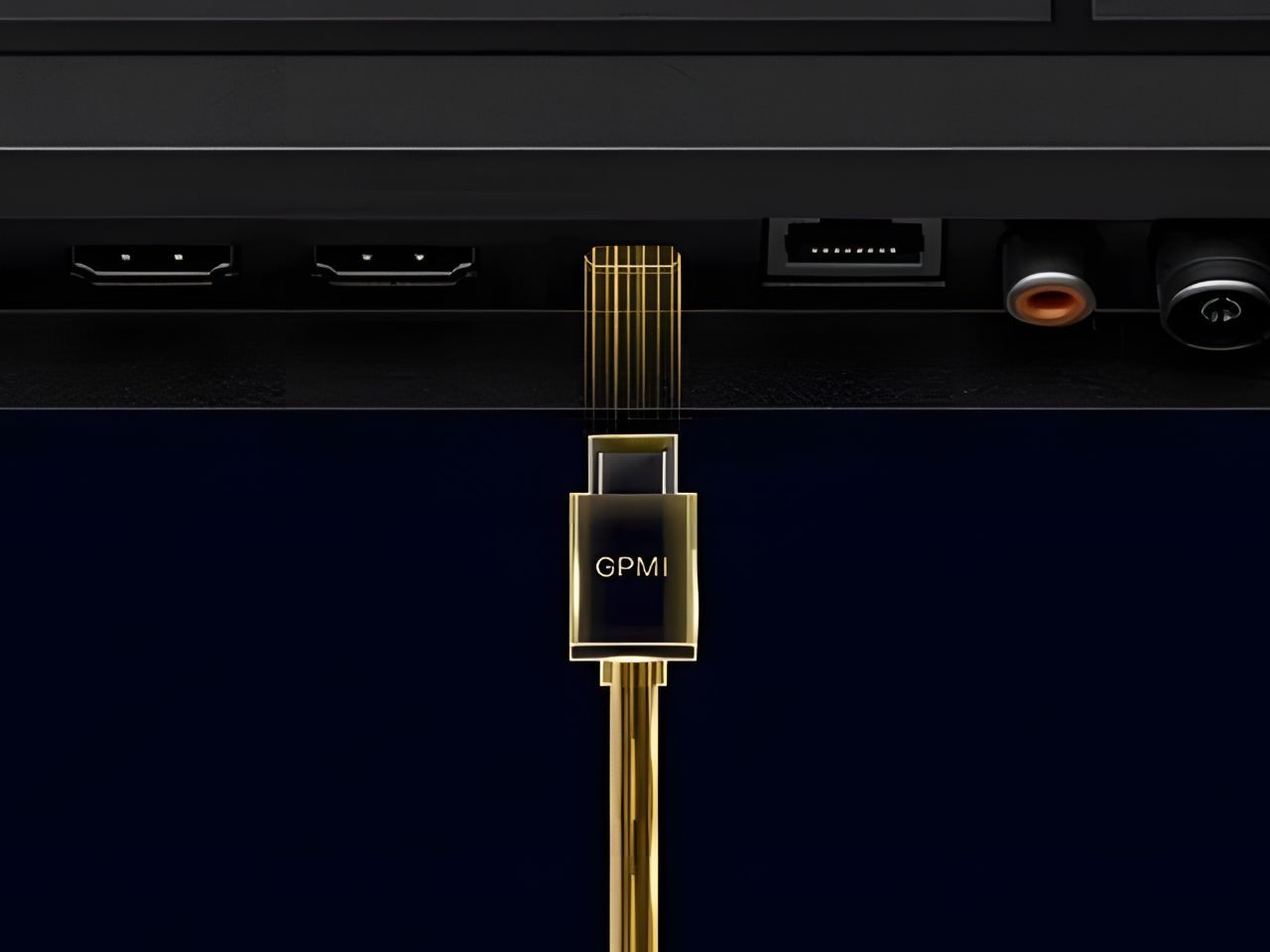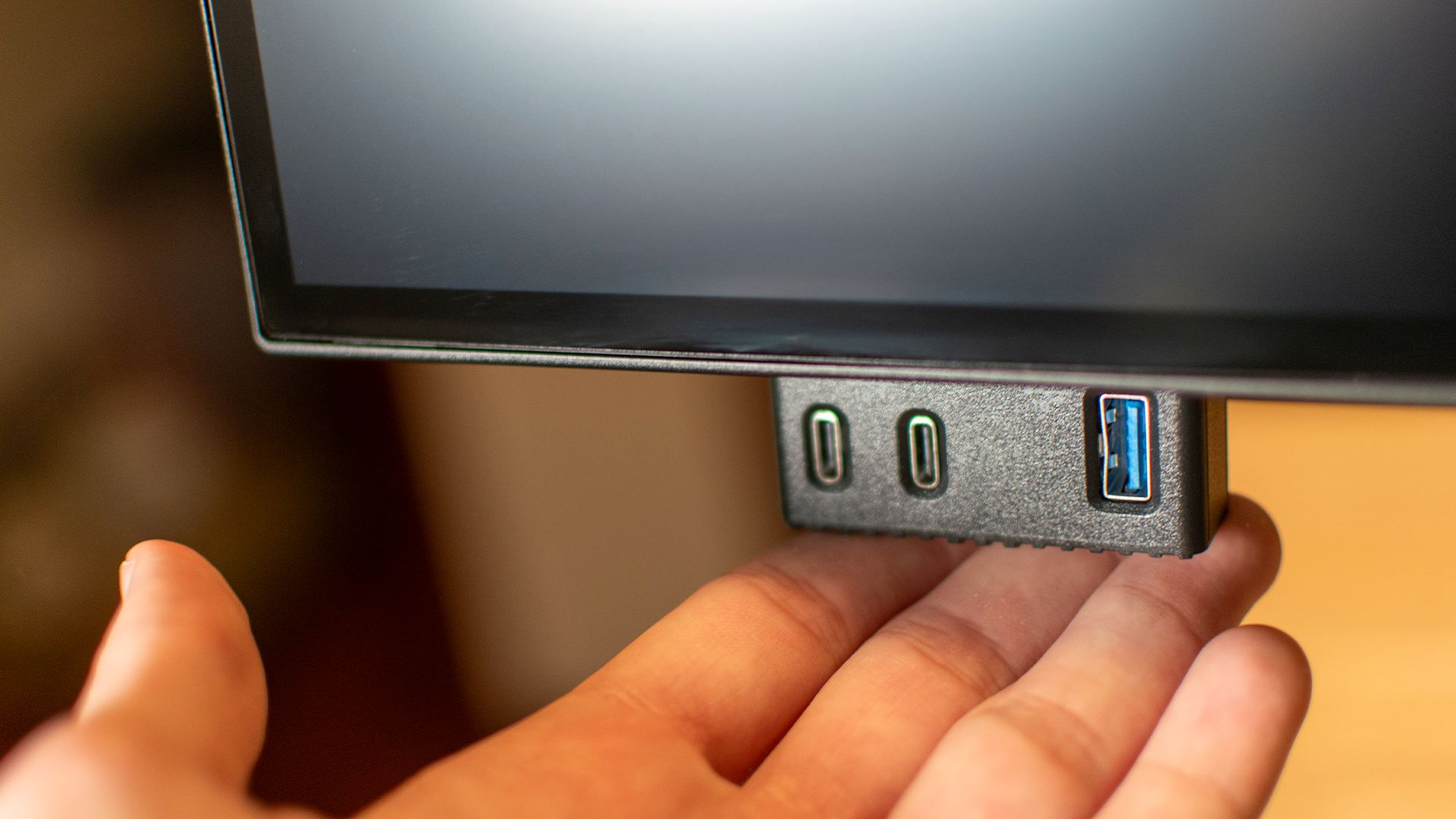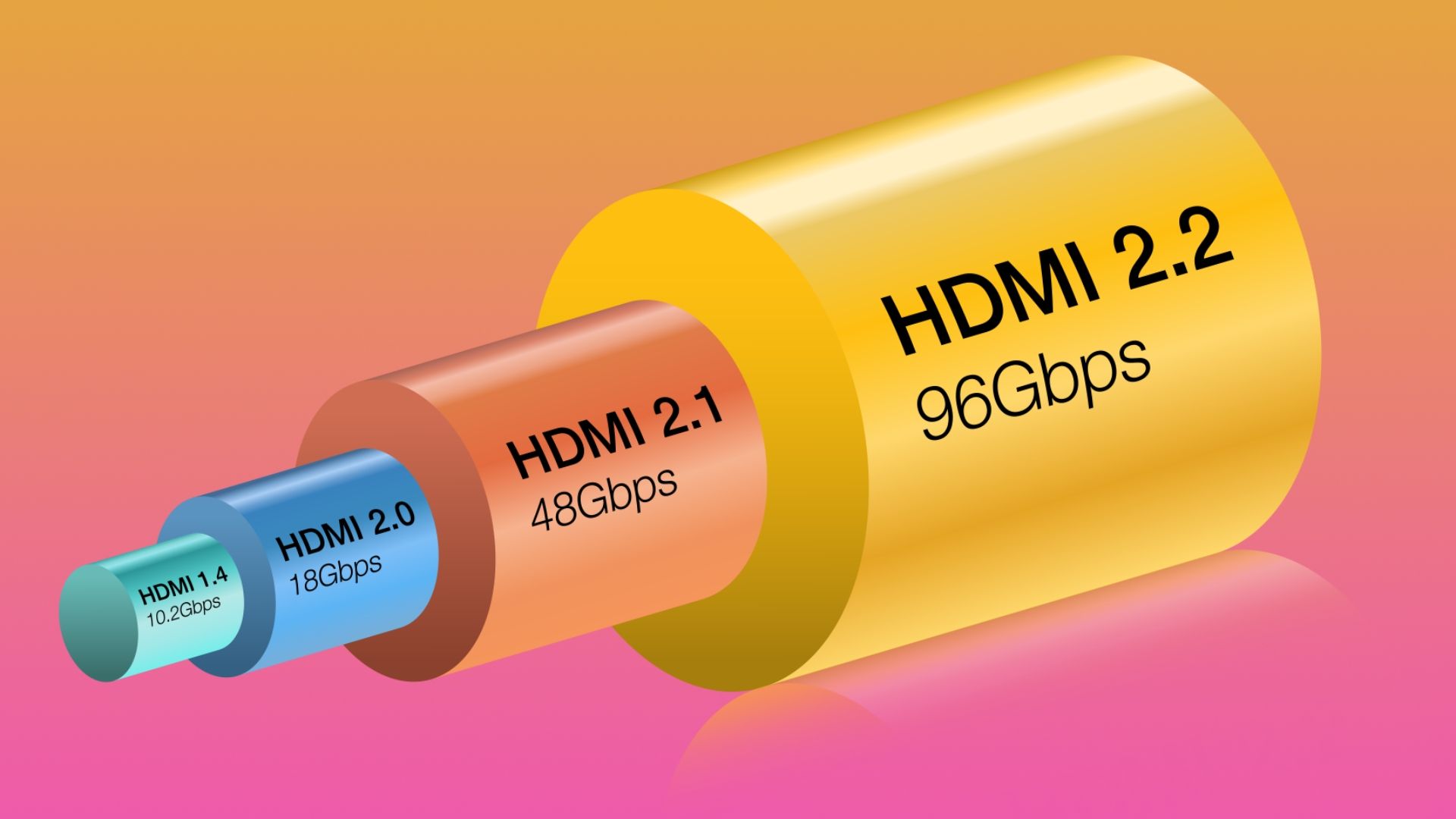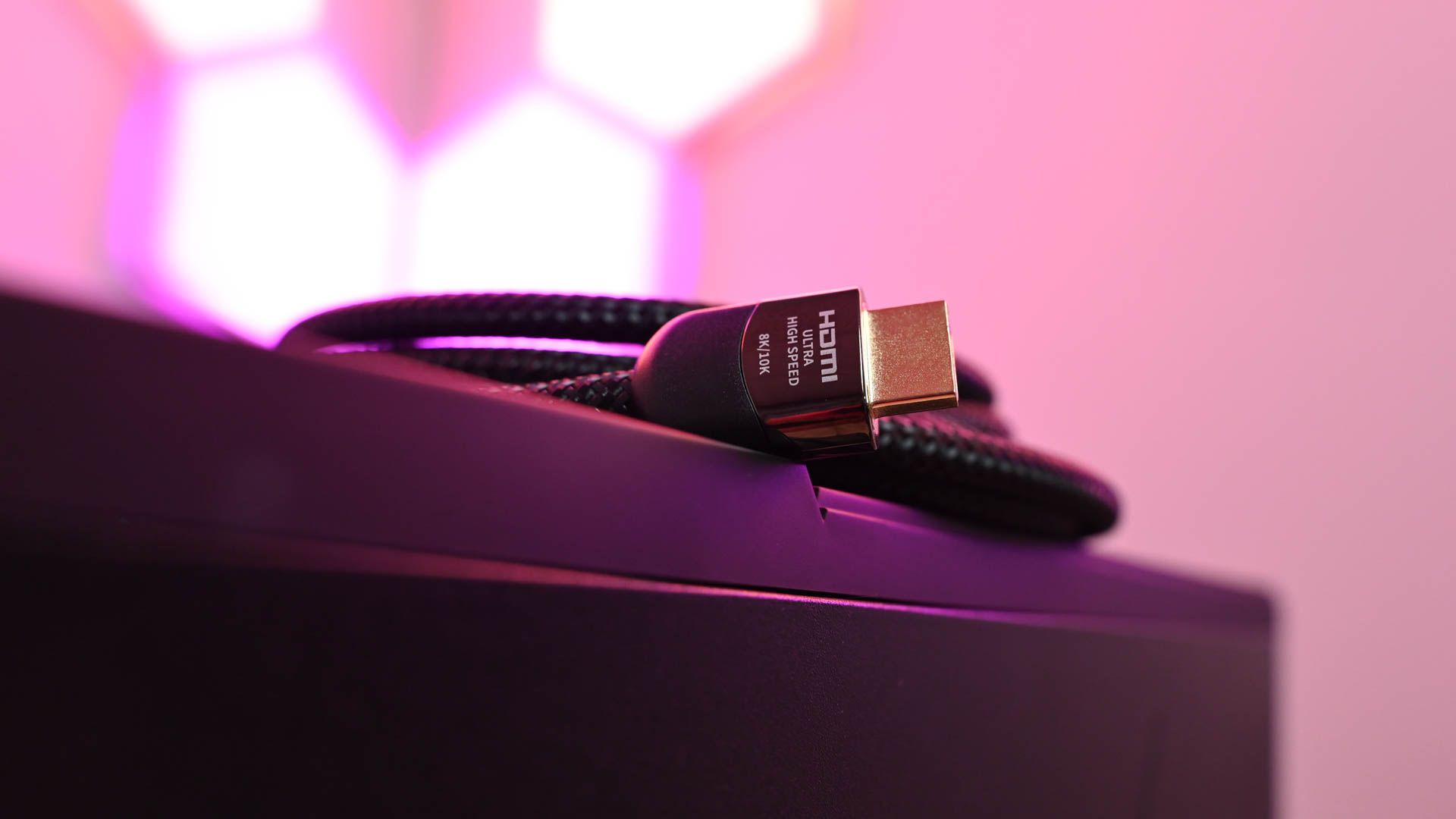Summary
- The GPMI standard has impressive bandwidth and power delivery capabilities of up to 192Gbps and 480W.
- Companies outside China are unlikely to adopt the GPMI standard due to strong alliances with HDMI.
- The upcoming HDMI 2.2 standard can do 12K at 120Hz, which is sufficient for most consumers.
Somehow, it seems like the HDMI standard can’t catch a break. Just as the latest HDMI 2.2 standard was revealed ahead of CES earlier this year, a new challenger from China has entered the ring: the General Purpose Media Interface (GPMI).
What Is the New GPMI Standard?
GPMI (General Purpose Media Interface) is the latest proprietary connector standard developed by the Shenzhen 8K UHD Video Industry Cooperation Alliance (SUCA)—a consortium of over 50 Chinese tech giants, such as TCL, Hisense, Skyworth, and Huawei.
The new GPMI standard features two connector types: a proprietary Type-B and a Type-C that is physically compatible with USB-C. Both GPMI versions combine high bandwidth, power delivery, and networking into a single cable, positioning GPMI as a potential rival to HDMI, Thunderbolt, and DisplayPort. Here’s how GPMI compares to existing standards:
|
Connector |
Bandwidth |
Power Delivery |
|
GPMI Type-B |
192Gbps |
480W |
|
GPMI Type-C |
96Gbps |
240W |
|
HDMI 2.1b |
48Gbps |
N/A |
|
HDMI 2.2 |
96Gbps |
N/A |
|
DisplayPort 1.4a |
32.40Gbps |
N/A |
|
DisplayPort 2.1 UHBR 20 |
80Gbps |
N/A |
|
Thunderbolt 5 |
80Gbps/120Gbps in one direction |
240W |
|
USB4 |
40Gbps |
240W |
This combination of high data transfer and power delivery in a single cable could, in theory, allow users to connect TVs, laptops, gaming consoles, Blu-ray players, and other devices with just one cable.
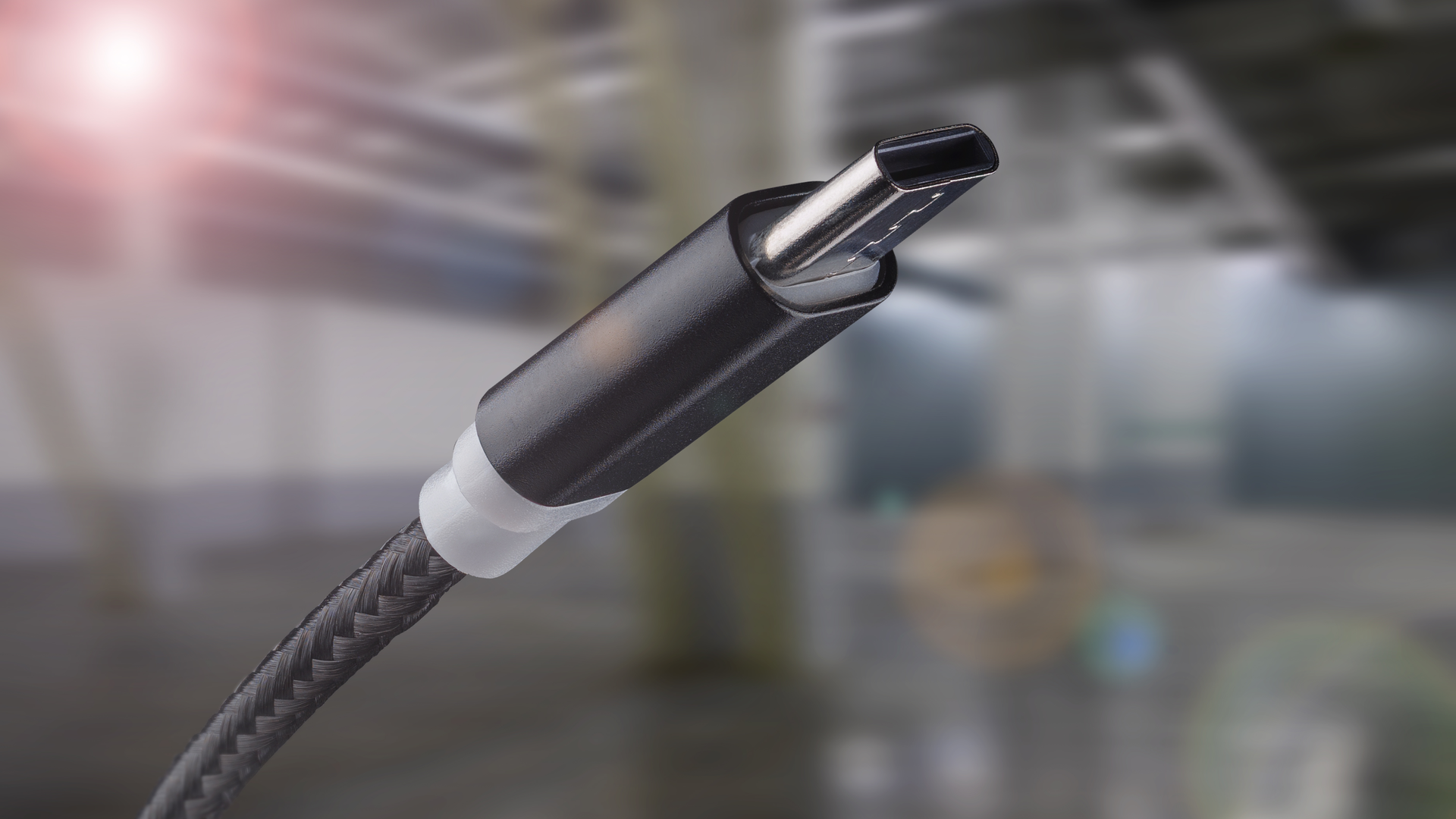
Related
Why USB-C Isn’t the One Port to Rule Them All (Yet)
A cable and connector that can handle every task would make life easy. So why isn’t USB-C there yet?
The smaller Type-C connector could also be used for VR devices, supporting high resolutions and refresh rates with minimal latency—no separate power cable required. If anything, the convenience and simplicity of using just one cable is a pretty neat feature.
The information here has been taken from HKEPC’s article (written in Chinese) using machine translation.
Companies Outside China Are Unlikely to Adopt the New Standard
To be honest, as impressive as the new GPMI standard is, I don’t think that we’ll see it on TVs outside the SUCA alliance anytime soon. This includes the three most recognizable manufacturers: Samsung, Sony, and LG.
On the other hand, Hisense and TCL are both major TV brands with a strong presence in the US. Since they’re part of the alliance, they’ll likely include GPMI on some models. It’s also possible that they’ll produce one version with GPMI for China and another with HDMI 2.2 for international release.
However, even if TVs come with GPMI equipped, the other end of the GPMI cable would also need to support the standard. This would require GPMI to become commonplace across all devices used in the Western world.
I just can’t see Sony, Microsoft, or Nintendo adopting GPMI in their next-generation gaming consoles. GPU manufacturers like NVIDIA, AMD, and Intel are also unlikely to swap out a single HDMI port or DisplayPort in favor of a GPMI one. After all, we already have a slightly less powerful but widely supported standard that handles both lots of power and data: Thunderbolt.
Thunderbolt is available on select monitors like the Dell UltraSharp 4K Thunderbolt Hub Monitor (U2725QE). You can use a handheld, laptop, or some other Thunderbolt device to both display content and charge your device simultaneously. That said, I couldn’t find any TVs that support Thunderbolt.
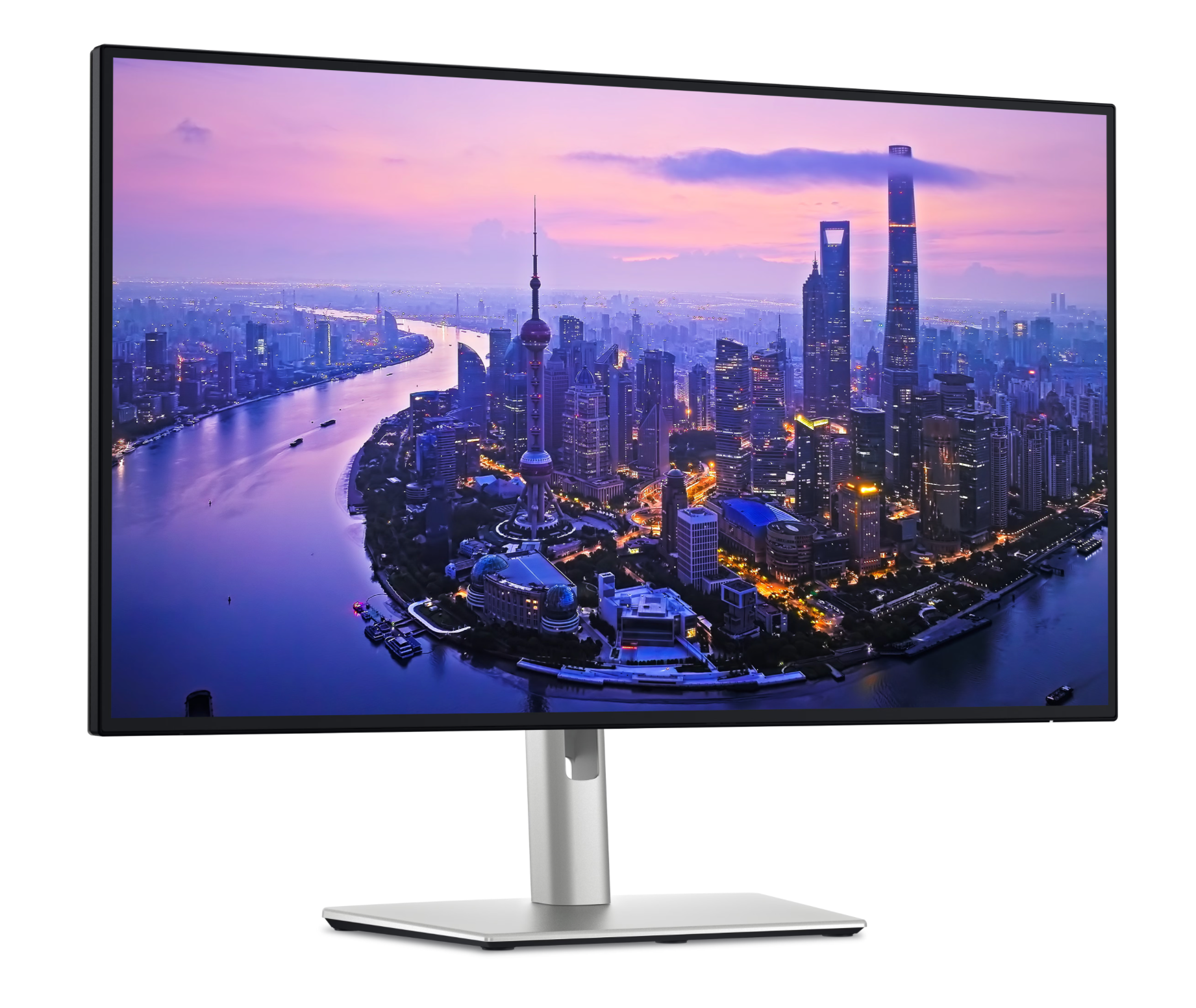
Dell UltraSharp 27 4K Thunderbolt Hub Monitor (U2725QE)
The Dell UltraSharp 4K Thunderbolt Hub Monitor (U2725QE) features a surprisingly deep 3000:1 contrast ratio, a 120Hz refresh rate, and an integrated Thunderbolt 4 hub. It’s one of the most versatile and attractive professional monitors available today.
Just to clarify, this is all pure speculation on my part. I could be completely wrong, and GPMI might end up swallowing every other standard to become the one connector to rule them all.
The Upcoming HDMI 2.2 Standard Is Already Overkill
While more bandwidth is always better, we’re still years away from TVs and PCs reaching the maximum bandwidth limits of GPMI Type-B or even Type-C, which matches the 96Gbps bandwidth of the upcoming HDMI 2.2 standard.
For context, the current HDMI 2.1b standard present on modern TVs, monitors, and graphics cards supports up to 48Gbps of bandwidth. That’s enough for resolutions and refresh rates like 10K at 100Hz, 4K at 144Hz without compression, or up to 4K at 240Hz with DSC.
If you’ve got an 8K TV, know that HDMI 2.1b can handle up to 30Hz uncompressed or 120Hz with DSC. The standard also supports 1440p at 240Hz, which happens to be my monitor’s current spec. Honestly, it’s already overkill for most people.
With HDMI 2.2 coming out later this year, it’ll push the limits even further. It will do 12K at 120Hz or 4K at a whopping 480Hz. The standard will offer enough headroom for ultra-high resolutions, extreme refresh rates, higher bit-depth color, and advanced HDR formats.
Granted, HDMI doesn’t support power delivery over the same cable, but that’s a niche use case already covered by Thunderbolt.
While SUCA’s GPMI standard is undoubtedly impressive, it’s also overkill for most consumers. Consumer-grade displays and rendering devices have a lot of catching up to do before they can even saturate the outgoing HDMI 2.1b standard, let alone the upcoming HDMI 2.2. Additionally, GPMI’s Chinese origins and the ongoing tariffs make mainstream adoption unlikely. As a result, the future of this connector is uncertain for devices outside of China.


